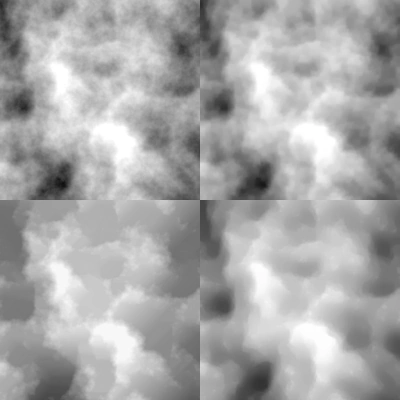Erosion
2008-11-12 — Now we take the noise away again
After using a mixture of voronoi and simplex noise to generate a height map, I realised that it doesn’t look very good – in particular the noise generation creates hard edges and jagged formations everywhere.
The solution to this is, or course, erosion. At right you can see the results of applying a very simple approximation of thermal erosion to generated height map.
This implementation is an image space post process. For each pixel, a fixed height is subtracted, and the algorithm then travels downhill, until it either reaches a maximum distance, or finds no adjacent pixel lower than the current pixel, at which point it deposits (adds) the same fixed height.
The images at right were generated by applying ten repetitions of this filter, for various values of the distance parameter. As you can see, larger distances tend to preserve detail on slopes, and result in large flat areas. Smaller values smooth out slopes as well, but don’t greatly affect the overall shape of the terrain.
This looks pretty good for a first stab at erosion, and is very fast, but I expect that a full implementation of thermal and hydraulic erosion will look substantially better.

